The biggest 'Black Panther' Easter eggs and end-credits scenes explained (spoilers!)
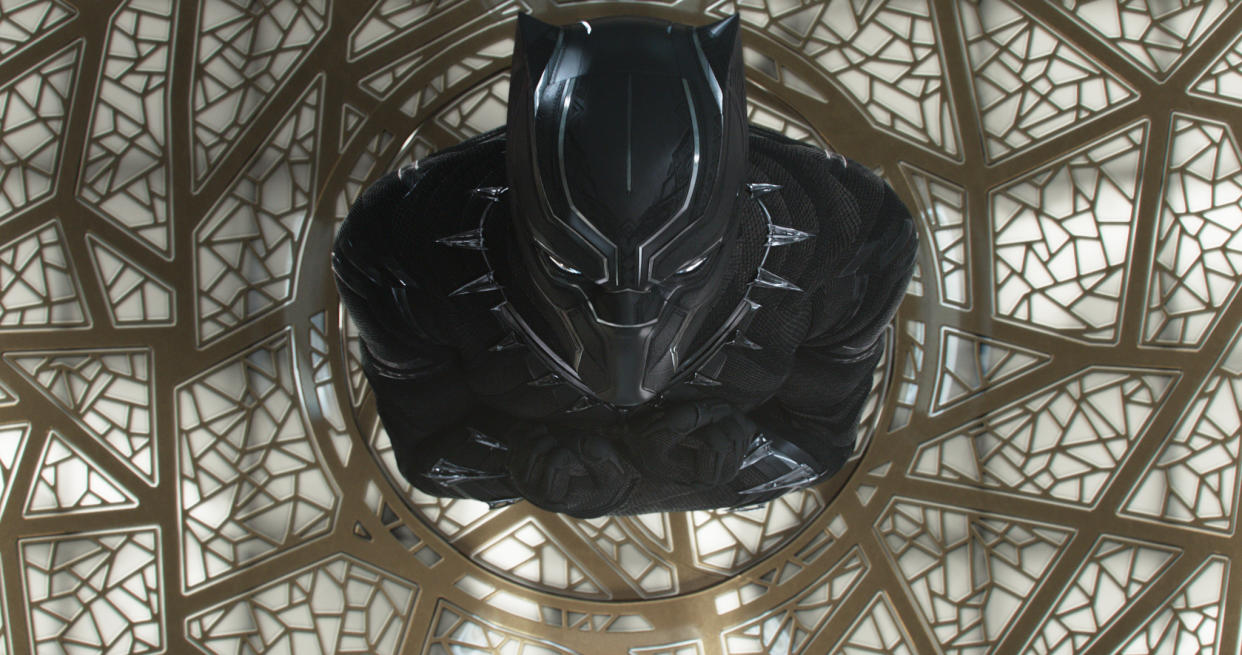
Beware, Black Panther spoilers ahead.
Every Marvel Studios-made movie comes embedded with references and shout-outs to the larger Marvel Cinematic Universe (as well as the Marvel Comics canon), and the exceptional Black Panther is no exception. Although the Ryan Coogler-directed blockbuster takes place in its own distinct corner of the MCU, the film also illustrates how T’Challa — who serves and protects his native land of Wakanda as both king and superhero — fits into the bigger Marvel picture. Here are explainers for 10 of the Easter eggs we spotted in Black Panther, including a breakdown of the two end-credits scenes. —Ethan Alter, Marcus Errico, Adam Lance Garcia, and Gwynne Watkins
Vibranium = Soul Stone?
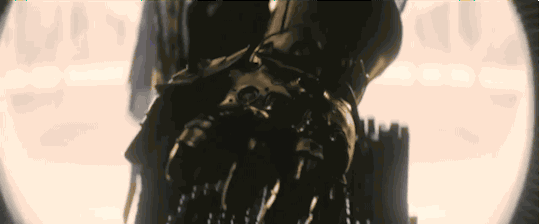
As MCU fans know, the mad titan Thanos needs to collect the six Infinity Stones to fuel his virtually omnipotent Infinity Gauntlet. So far, five of the stones have surfaced in various movies: the Space Stone (aka, the Tesseract or Cosmic Cube from Captain America: The First Avenger, last seen being smuggled out of Odin’s trophy room by Loki in Thor: Ragnarok), the Reality Stone (aka, the Aether from Thor: The Dark World, which had been housed in the Collector’s horde but whose whereabouts are currently unknown following Guardians of the Galaxy), the Power Stone (aka, the Orb from Guardians, in the safekeeping of the Nova Corps), the Mind Stone (aka, Loki’s scepter in Avengers, which brought Vision to life in Avengers: Age of Ultron and for the moment resides in the android hero’s head), and the Time Stone (aka, Dr. Strange’s time-shifting Eye of Agamotto necklace).
That leaves only the Soul Stone to be revealed. In Black Panther, we learn that vibranium, the element that fuels Wakanda, originated in outer space and crashed into the African nation, infusing the land with its power. The trailers for Avengers: Infinity War (watch above) show several of the key heroes from Black Panther doing battle with Thanos’s minions in what appears to be Wakanda. Our guess: the heroes are trying to protect the surviving hunk of the original vibranium meteorite (perhaps the jewel in Queen Mother Ramonda’s necklace, as seen in the poster below?) because it’s the final Infinity Stone.
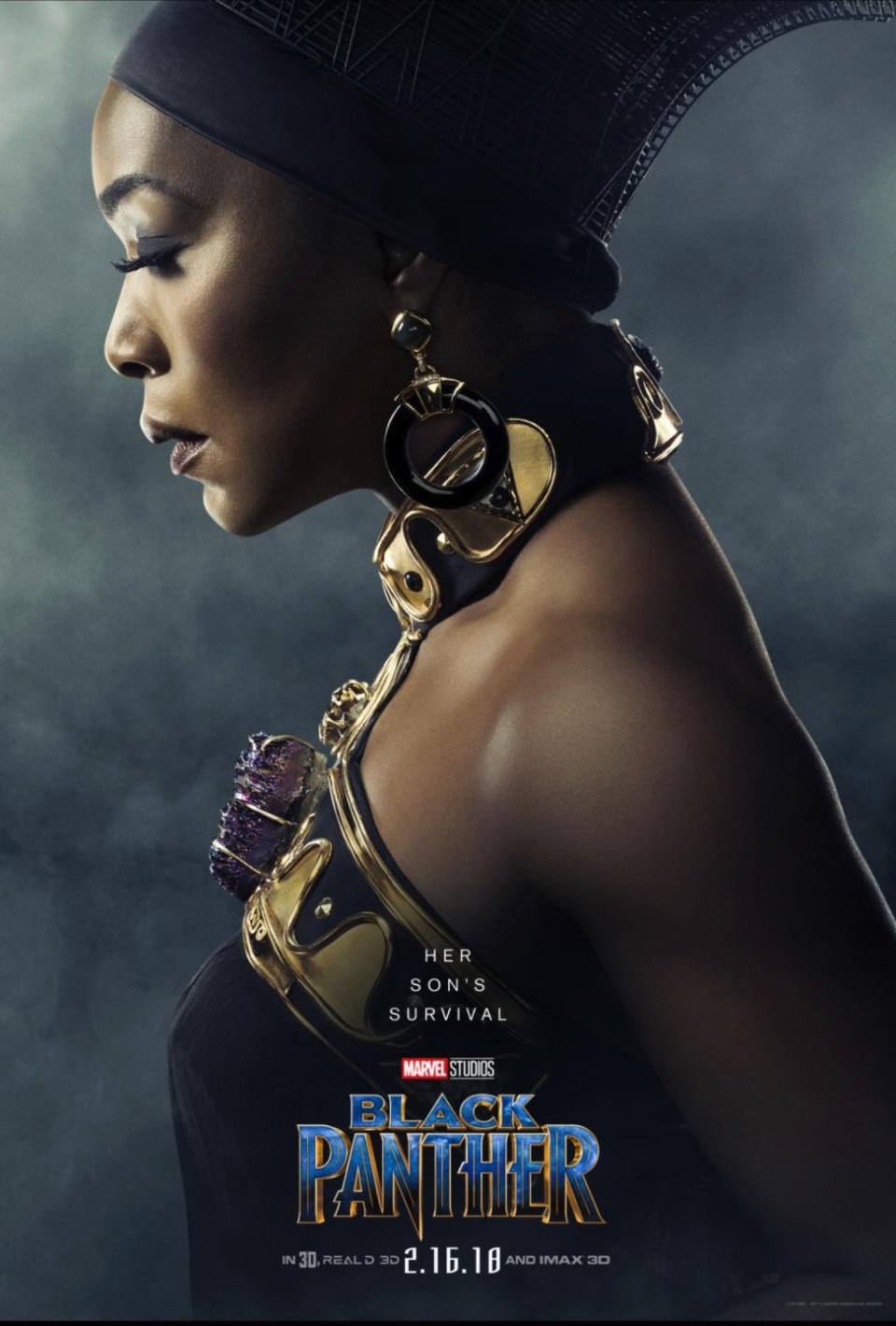
Postbellum
For those continuity nerds trying to determine when the majority of the events in Black Panther take place in relation to Captain America: Civil War, worry not! The film quickly answers that question with a news report indicating that the bombing at the U.N. that killed King T’Chaka occurred a week before. For a more detailed look at where the film takes place in relation to the wider, ever-expanding, and ever-more-complicated MCU, head on over to our breakdown.

Age of Klaue
Andy Serkis first sank his claws into the role of black-market dealer Ulysses Klaue in Avengers: Age of Ultron, where he made off with a sizeable amount of Wakanda-mined vibranium while Earth’s mightiest heroes were having their minds and bodies attacked by the titular metal despot and his minions, including the reality-altering Scarlet Witch, who later became their teammate. As further evidence that you shouldn’t ever trust a robot (besides the Iron Giant, of course), Ultron claimed Klaue’s left arm as compensation for the arms dealer’s unwise decision to draw parallels between the creature and his creator.
When he shows up in Black Panther, Klaue has, uh, re-armed himself with a literal cannon, and is still on the hunt for vibranium, teaming up with Erik Killmonger — who has his own connections to Wakanda — to pull off a daring museum heist. Meanwhile, T’Challa is still on the hunt for Klaue, capturing him in South Korea in hopes of bringing him back to his native country to face justice for his crimes, at least until Killmonger intercedes and springs him. But their alliance is a temporary one: Erik nabs Ulysses specifically so that he can kill him and uses his corpse as a ticket into Wakanda. Not for nothing, but this is the third franchise that has killed off Serkis in the past year; the actor’s ape alter ego, Caesar, was laid to rest in War for the Planet of the Apes, while his Star Wars bully Snoke got a lightsaber to his midsection, courtesy of one-time apprentice Kylo Ren, in The Last Jedi.
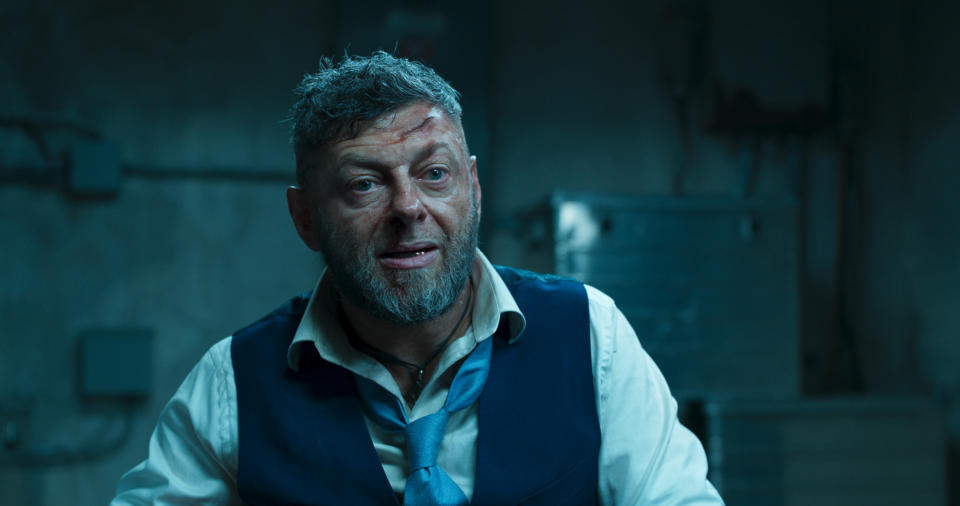
Panther … Black Panther.
There’s been a loud debate over whether the next James Bond should be a person of color. Who needs James Bond when you have T’Challa? Ryan Coogler pays tribute to the classic spy series early in the film. First, T’Challa’s sister, Shuri (Letitia Wright), demonstrates that she’s a sassy, latter-day Q, designing an array of amazing supersuits, weapons, and accessories that would put MI6 to shame.

Then we get an incredible Bond-esque set piece in which T’Challa, Nakia (Lupita Nyong’o), and Okoye (Danai Gurira) try to shut down Klaue’s black market deal in an underground Korean casino before everything goes south. The action sequence establishes a new standard for espionage thrillers: 007, you’re on notice.

There’s Stan Lee, True Believers
The 95-year-old comics legend has been doing Marvel movie cameos since before the MCU began. Though he doesn’t get to enter Wakanda, Lee encounters T’Challa in that same South Korean casino. When Black Panther’s crew ends up in a brawl, a high-rolling Lee grabs T’Challa’s winnings … for safekeeping.
Marty McFly’s kicks
Among the high-tech upgrades that Shuri invents for her big brother are self-fastening shoes — inspired, she says, by “that old movie” their father used to watch all the time. The film in question would appear to be Back to the Future Part II, which featured automatically lacing Nikes and apparently played frequently on the king’s vibranium VCR.
Dead meat
Ryan Coogler cast his favorite leading man, Michael B. Jordan, as a second-generation Creed in their much-praised Rocky reboot. So it’s only natural that when they reteamed for Black Panther, Coogler would tap Jordan to play a second-generation Lang … as in Clubber. Boxing movie fans will recall how the snarling Clubber knocked the Italian Stallion flat in their first encounter in Rocky III, and Erik Killmonger goes after his cousin, T’Challa, with the same ferocity when they tangle for Wakanda’s throne in ceremonial combat.
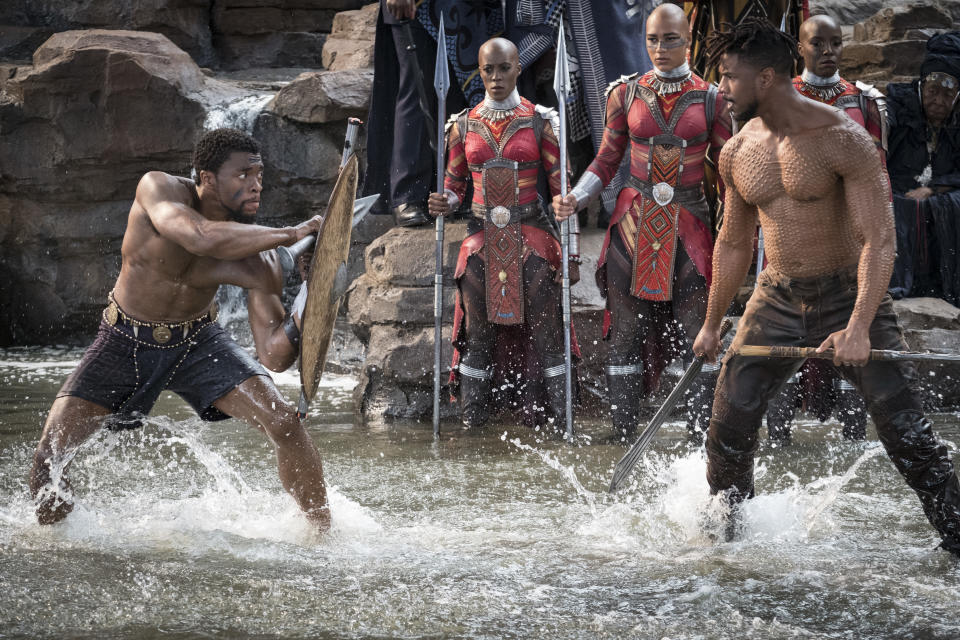
And Jordan certainly bulked up to Mr. T-sized proportions to play Killmonger, who handily defeats his overmatched rival to claim both the crown and the mantle of the Black Panther. During his recuperation, though, T’Challa — like Rocky before him — discovers his eye of the tiger (or should that be eye of the panther?), and proves that Erik ain’t so bad in their rematch. Jordan is already set to tangle with the son of Ivan Drago in Creed II, to be directed by Steven Caple Jr. For his next gig with Coogler, maybe he’ll come out swinging like Mason Dixon?
Rhino-blasty
If you thought T’Challa wrestling W’Kabi’s war rhinos is one of the film’s more absurd, “comic-booky” moments, you’re only half right. While the war rhinos themselves are the creation of the filmmakers, there are many who believe this scene is a callback to a scene in a 1988 Black Panther comic in which Wakanda’s king wrestles a rampaging rhino into submission.
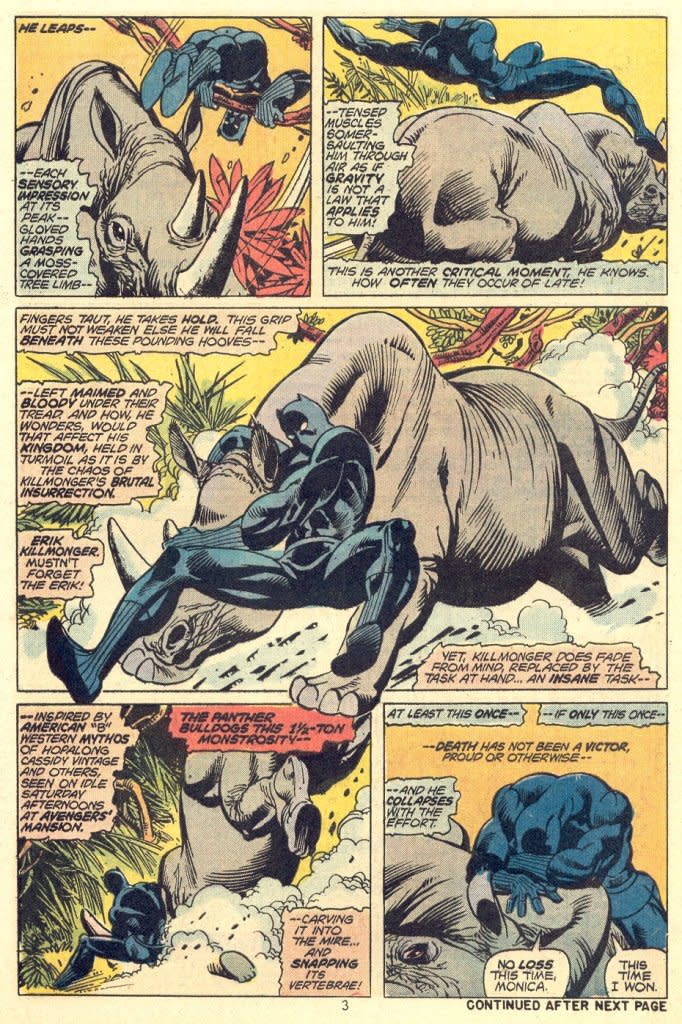
Panther diplomacy
In the first of two post-credit scenes, King T’Challa introduces himself to the world via a stirring speech given in front of the United Nations. It’s not entirely unlike the address that Tony Stark gives to the press at the end of the original Iron Man … minus the raging ego and public confession that he’s a superhero, of course. While he doesn’t reveal his Black Panther antics, T’Challa does proclaim a new day for Wakanda’s place in the global community. No longer content to remain closed off, the nation will share its resources and knowledge, which will come in handy since Earth is facing the looming shadow of intergalactic war. “In times of trouble, the wise build bridges while the foolish build barriers,” the king proclaims — an explicit reference to the current occupant of the White House in the real world, not the MCU. There’s a reason why Black Panther is Marvel’s most political movie yet.
On the prowl
He’s baaack. After being put in deep freeze at the end of Captain America: Civil War, the Winter Soldier, aka Bucky Barnes, is now living a quiet life on the Wakanda savannah. T’Challa’s sister, Shuri, has apparently found a way to rinse out Bucky’s Hydra-overseen brainwashing, and she has bestowed upon him a new identity: the White Wolf. In the comics, that’s the alias of a Caucasian foreigner named Hunter whom T’Challa’s father, T’Chaka, adopted before his biological son was born. With the throne out of reach, the patriotic Hunter rose to become the head of his nation’s secret police, which T’Challa eventually disbanded due to its brutal methods.
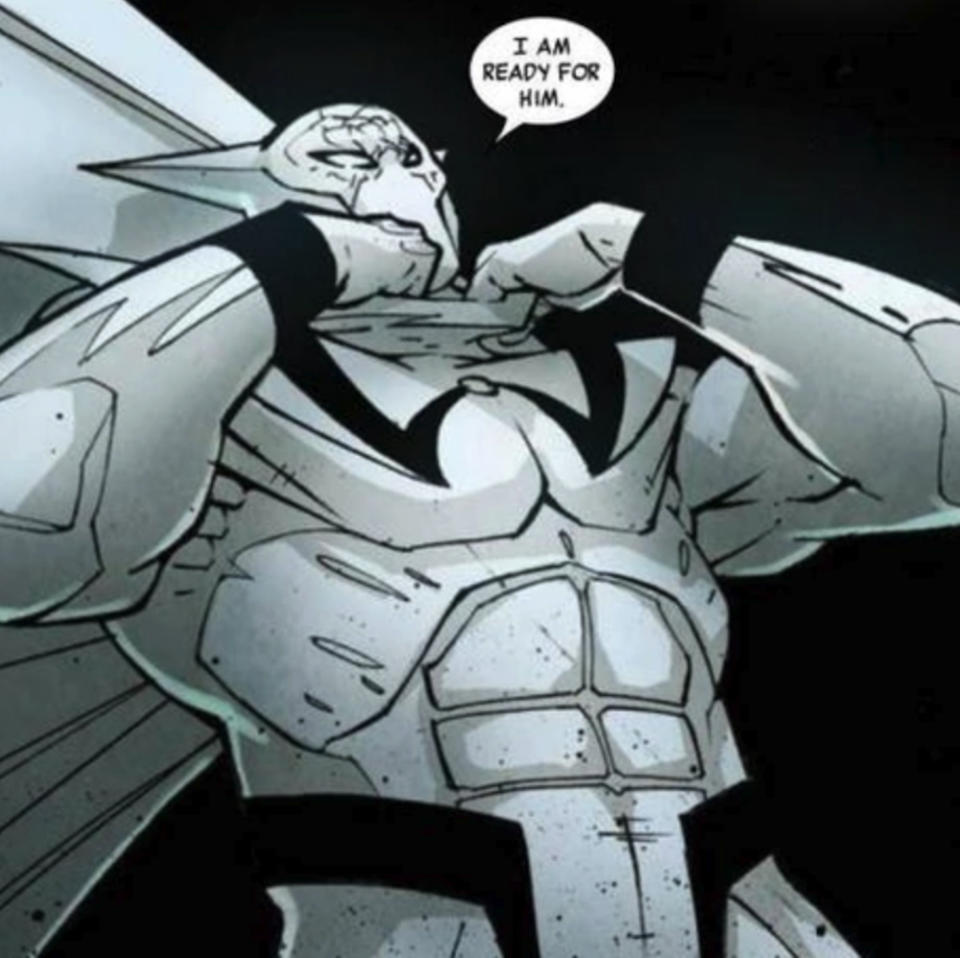
Adopting the White Wolf moniker, Hunter left his adopted home to pursue a career as a mercenary. Despite his sometimes antagonistic relationship with T’Challa, the White Wolf would occasionally answer Black Panther’s call when Wakanda needed him. Unlike Hunter, the MCU version of Bucky clearly has no designs on T’Challa’s crown, and the new king has already cleared the Winter Soldier of having any involvement in his father’s death during Civil War. As we’ve seen from the Infinity War trailers, this White Wolf has no issue with standing alongside the Black Panther when Thanos comes knocking on Wakanda’s door.
Watch: Black Panther from page to screen:
Read more from Yahoo Entertainment:
